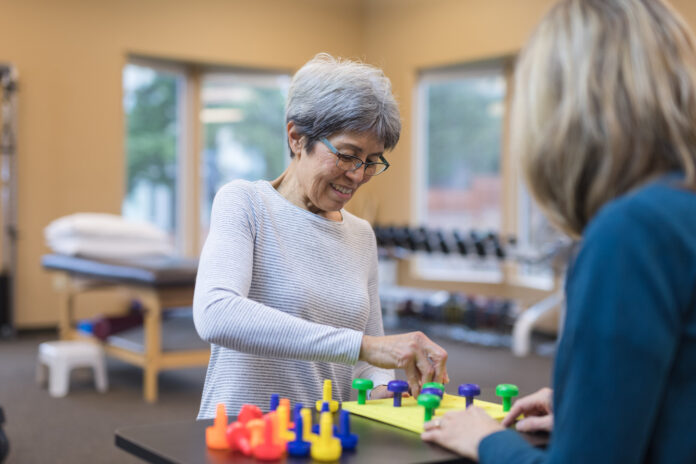What is an Occupational Therapist?
This is one of the most frequent queries we encounter as occupational therapists, For more information on aged care Melbourne check out Melbourne Aged Care Group.
Occupational Therapy Calgary Everyone has their own definition of occupational therapy; however, one way of looking at it is that OTs assist people to achieve or retain independence in any activity or occupation that fills their time and has personal importance to them.
It’s worth looking at a few examples solely for context.
- For kids, occupational therapy can entail learning how to use the restroom on their own or developing social skills so they can play with other kids.
- For teenagers, it can include figuring out how to use public transportation on their own to get to school.
- Getting back to work after an injury or learning how to live independently are two examples of occupational therapy for adults.
- For older folks, occupational therapy can mean maintaining their freedom when taking a shower.
As you can see, the scope of occupational therapy is fairly vast, which is frequently why some people find this profession confusing. The most important thing to bear in mind is that occupational therapists help people become independent in any activity that is important to them.
OT Practice Scope
You probably understand how occupational therapists’ roles can actually fit into any scenario now that you have a greater idea of what OT is and the type of work occupational therapists perform.
Here are just a few examples of the places in which OTs can work:
- Hospital environments where staff members help patients regain functional independence after sickness, such as the ability to independently dress themselves after a stroke using their left arm.
- School environments can help kids meet key developmental milestones in subjects like handwriting.
- An outpatient psychiatric facility where staff members assist teenagers or adults in recovering from addictions or mental health conditions that affect their capacity to function and participate in worthwhile activities.
- Communities where you meet the person in their own home and help them achieve whatever environmental goals for independence they may have, such as making home changes for wheelchair accessibility.
- Aged care facilities where you can re-engage senior citizens in meaningful activities so they can spend the rest of their days doing what makes them happy, like taking a stroll or socialising.
The list goes on. Due to the OT role’s breadth and diversity, therapists are free to pursue unusual directions. Because of this, their function is flexible and always evolving.
The PEO model is one of the most popular models that is used as a framework for occupational therapists.
PEO stands for Person, Environment, and Occupation in the PEO model. This model highlights how each of the three factors has a significant impact on a person’s life, aspirations, and ability to develop personally. There are other alternative models with a wider range of classifications or categories that occupational therapists employ in their practice. However, occupational therapists naturally adopt a holistic approach to therapy since they are aware of the complexity of each individual. It is very hard to assist a customer in achieving their goals without a holistic approach.
How the OT Role Has Changed, Taking Individuality into Account
The National Disability Insurance Scheme (NDIS), which has just recently begun to be implemented, has expanded the settings in which occupational therapists can find employment and further develop their abilities. Because of this government programme, persons with disabilities have access to a range of healthcare services, allowing OTs to reach them and offer therapeutic support outside of the usual venues.
Since occupational therapists are now working even more closely with other healthcare professionals, they are always learning and improving their skills and frequently adopting new therapeutic approaches, including those from other professions. This has also increased their personal risk that should be mitigated with therapist insurance. This has furthered their “holistic approach” and clarified why the OT profession frequently crosses over with others. The OT position has expanded as a result of this development.
It’s also crucial to remember that every OT has their own style of therapy delivery. This is frequently the result of practitioners developing their own personal objectives and discovering new strategies for promoting health and wellbeing in both themselves and their patients.
This global situation has highlighted the significance of engaging in meaningful activities and how that has an impact on an individual’s overall health and well-being, particularly in light of the COVID-Pandemic. emphasising the OT profession and how it contributes significantly to the healthcare sector
Read more News and Stories from The Right News Network.












